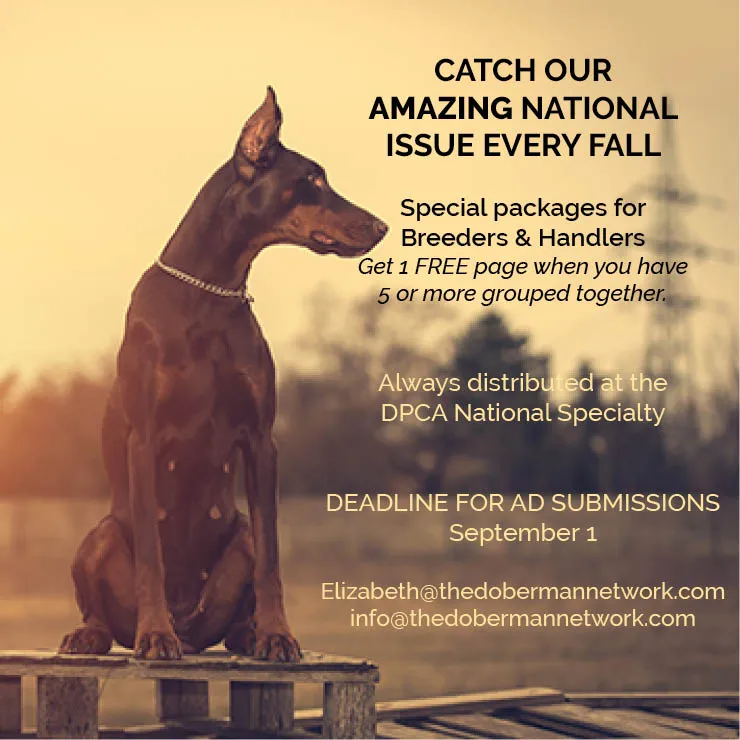Ch. Wingate’s Miss Moneypenny
Posted on September 27, 2017

A successful breeding program is one where well-educated guesses combine with a degree of good fortune. Many long-time breeders have probably experienced that special breeding that just clicked, producing a myriad of noteworthy offspring and a whole lot of accolades for the breeder. I was fortunate to have that happen very early in my breeding experience.
Ch. Wingate’s Miss Moneypenny – “Inga” – was rather straight in the rear by today’s preferences and medium-boned at best. Her head lacked under jaw, but was otherwise good. She was square, balanced, and had a rock solid topline, both standing and moving. Her side gait was exemplary and she finished with an unknown handler from her area who actually worked on her owner’s horse ranch. Her temperament was rock solid and she was a terrific companion and mother.
The breeding of Riot to Inga was repeated three times. Some asked me why I did not use a different sire for Inga’s later litters. But, I was happy with the offspring resulting from this combination and I had wonderful homes anxiously waiting for a Riot x Inga puppy.
As a hobby breeder with a demanding career, I knew that I would not be breeding a lot litters. My goal was to acquire a formidable foundation bitch and, hopefully, produce a follow-up female holding the Wingate name. Thanks to Riot and Inga, I was off to a good start.
Looking back, I am honored to see the long-term impact that some of these Dobermans have had on the breed. Although, as a group, their conformation was above-average, it was temperament, health, and longevity that really make this breeding so noteworthy.
For those that aspire to build a small, but successful, breeding program or improve on the one they have, here is what I took away from the experience of breeding Ch. Wingate’s Miss Moneypenny:
A bit of breeding wisdom
- A tight line-breeding (some would call in-breeding) should only be considered after analysis of strength of pedigree, assets and weaknesses the members- especially those with high in-breeding coefficients, and health factors. Riot and Inga did not exhibited the faults of their dam and, although those may re-appear, they will hopefully not dominate in the offspring.
- The divergent part of the pedigree should contain animals that are complementary to the parents since they too will have influence on the outcome and can off-set, to some degree, less desirable traits in the line-bred portion.
- If the breeding produces a female that is better than the dam, consider keeping her. A top quality, line-bred female is a valuable asset for a breeder and offers many breeding options. You now have the opportunity to consider a male for breeding that shares few common ancestors but offers exemplary breed type.
- If there is depth of quality in the breeding, try to place pups in homes that are interested in showing and breeding. That way you won’t feel compelled to keep more pups than necessary. The value of repeating a successful breeding is the likelihood is that your buyer pool will contain more great homes.
- Don’t be tempted to do a close line-breeding for the sake of convenience or for any reasons other than the quality of parents, strength of pedigree and adherence to the standard. The likelihood that you will cement undesirable traits into the next generation is too risky. The purpose, of course, is to create offspring who enhance the future of your breeding program for many generations to come.
Thanks to Ch Wingate’s Miss Moneypenny and the vision of her owner, a horse breeder who knew the value of careful selection of related animals, this breeding came to be. It was a lucky combination of genes donated by above-average parents with top winning and producing pedigrees.
Chances are that if you look beyond the first four generations of your pedigree, you may see the name of “Inga” and her kids. As an outstanding dam, Inga will be honored with a DPCA Legacy Award at this year’s National for her lasting, positive impact on the Breed through her progeny. I am blessed to have been able to breed this truly wonderful Doberman bitch, and through her descending progeny, the #1 Doberman in the country, GCHP Fidelis Ripord DS, WAC.

